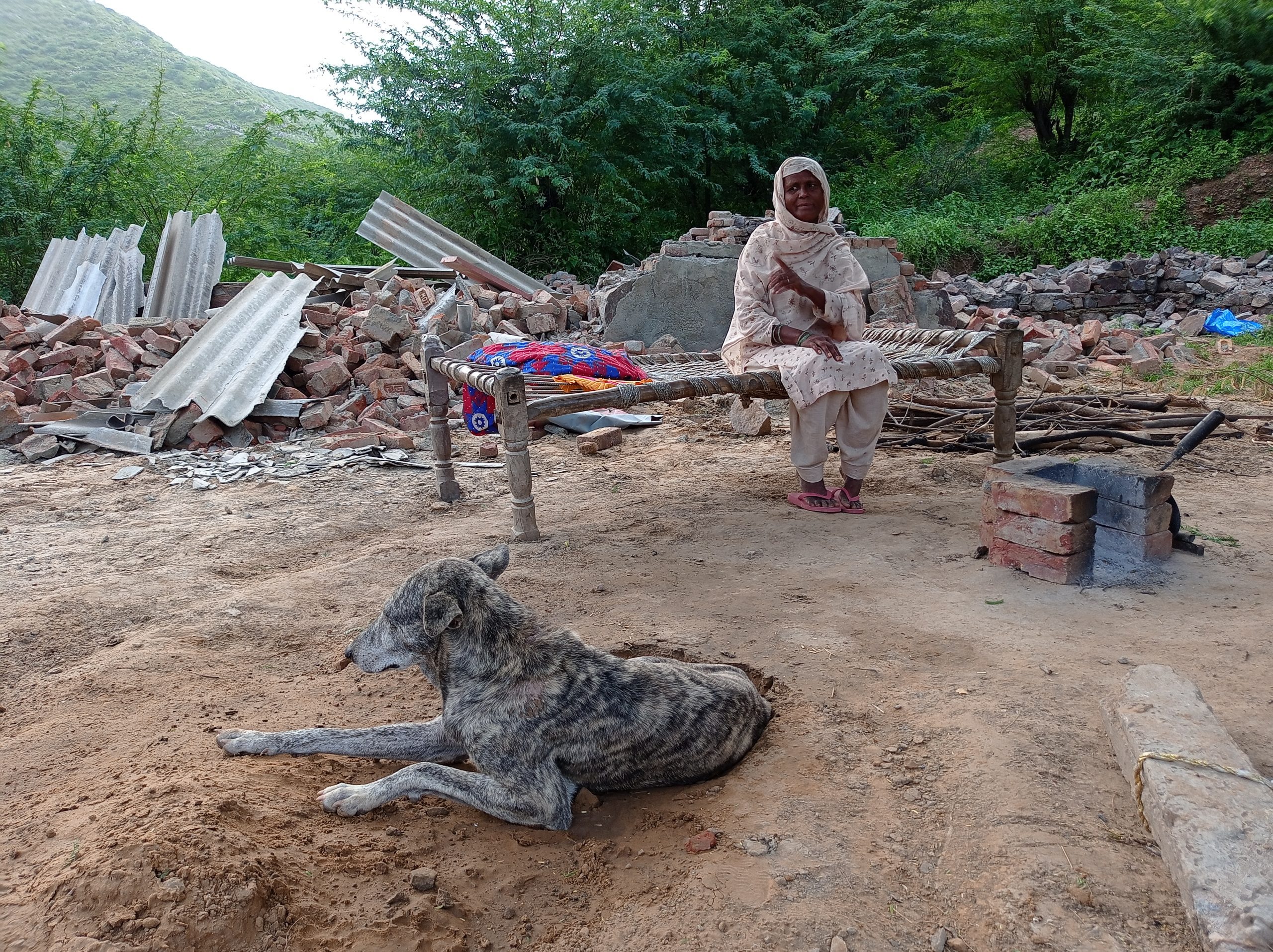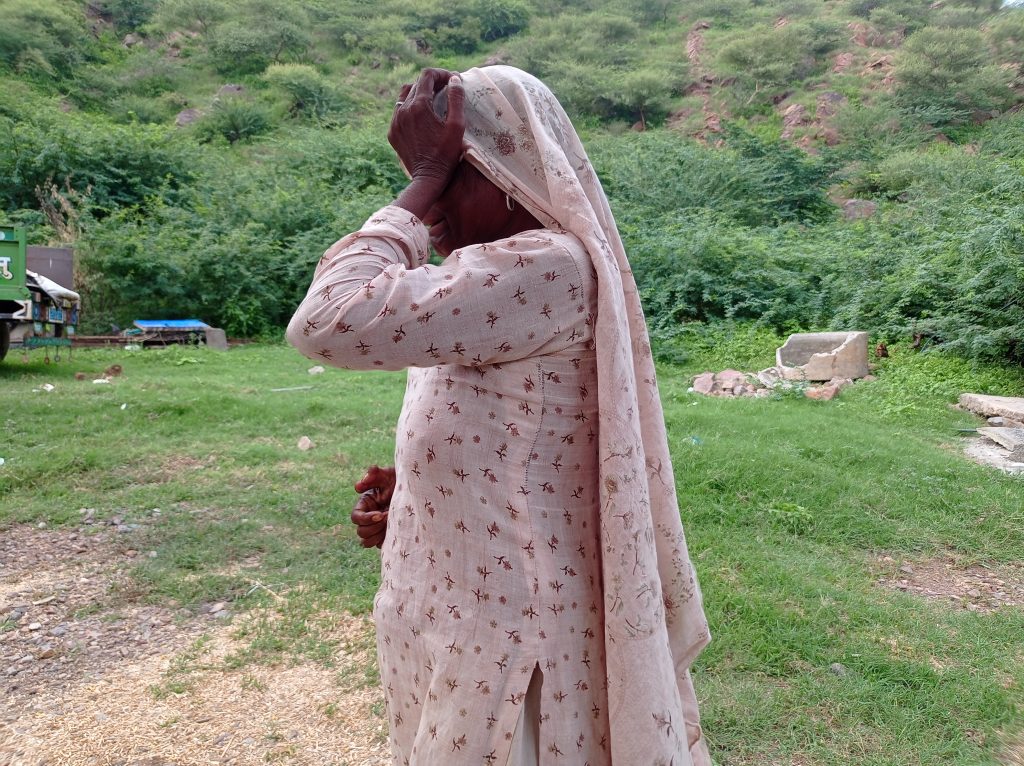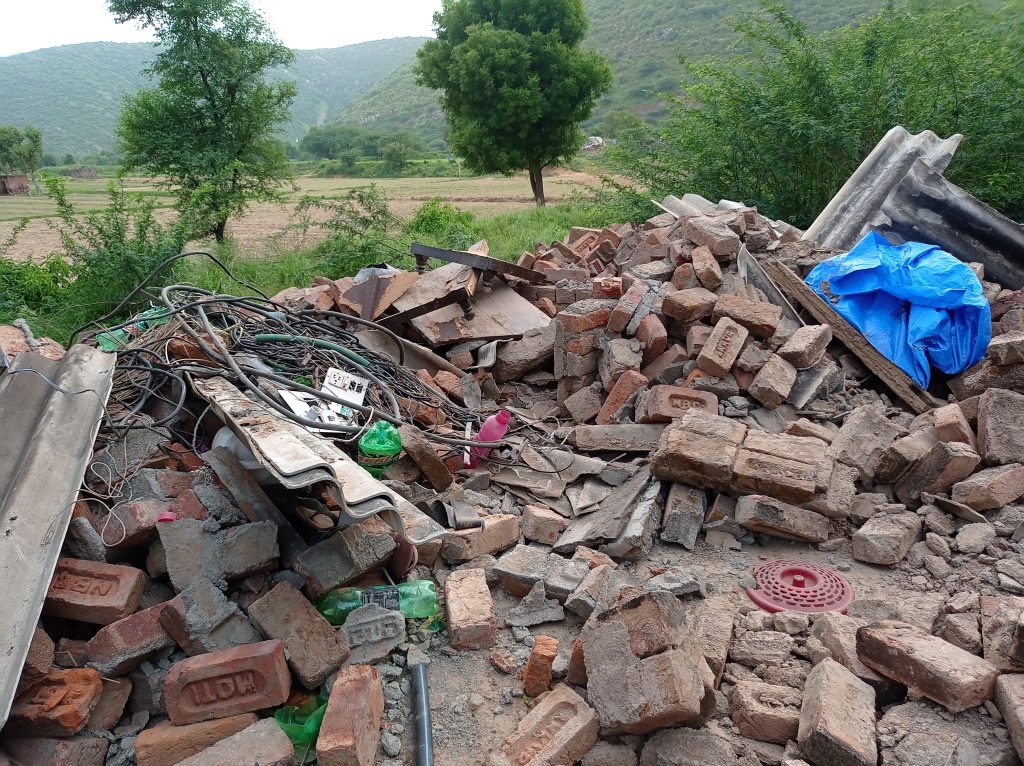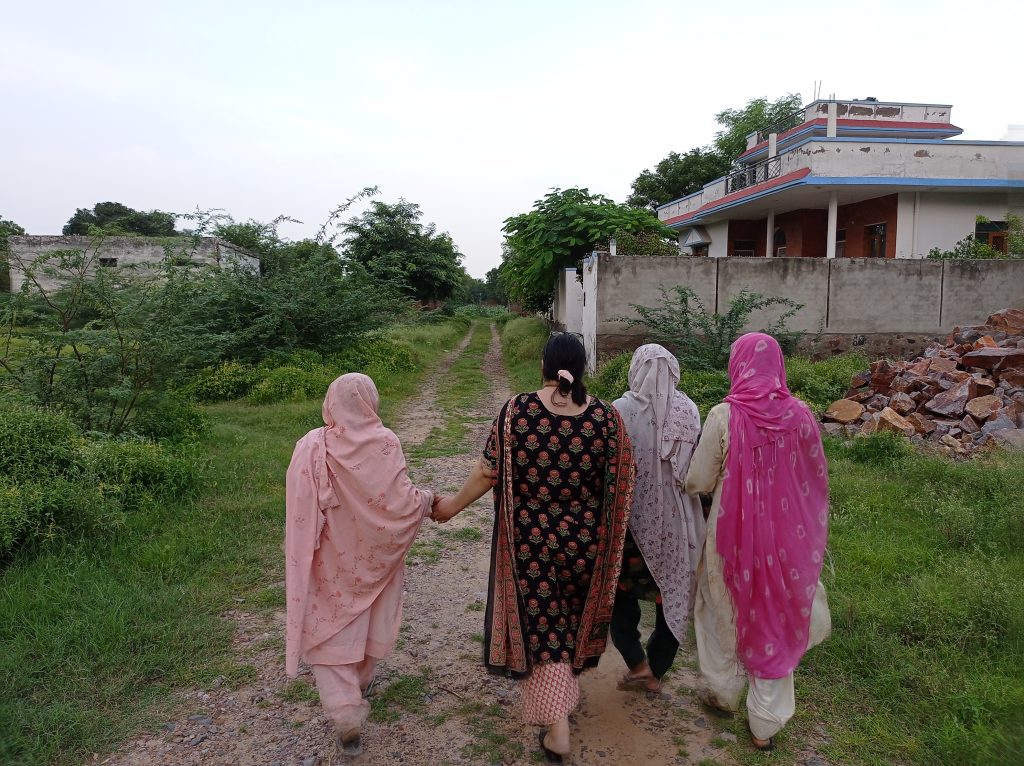Anger, Anxiety, Loneliness: How Haryana’s Communal Violence Looks Through The Gender Lens
Poverty, injustice and insecurity have added to the vulnerability of the women affected by the communal violence in Haryana

To get to Nuh you have to traverse the hilly terrain of the Aravallis that are lush green in the monsoons. But the villages of the district and town itself look ravaged by violence – there are burn marks seared on the roads, shops and businesses have been wrecked and distraught women are scrambling through the remains of their demolished homes in search of things they can salvage.
On July 31, communal violence erupted in this district of Haryana after a Hindu procession organised by the Vishwa Hindu Parishad and the Bajrang Dal, both affiliated with the ruling Bharatiya Janata Party, turned violent. In the days that followed, over 1,000 structures, including the homes and businesses of an overwhelmingly Muslim population were razed to the ground by the Haryana government. (Nuh is the only Muslim-majority district in Haryana, and has the highest proportion of Muslims in north India outside Kashmir.)
The demolition was conducted in an area spanning over 50 km, across Nuh town and the villages of Nalhar, Nagina and Firozpur Jhirka.
Sporadic yet coordinated incidents of violence erupted in other, contiguous parts of Haryana too, such as Sohna and Gurugram. Here also shops and businesses owned by Muslims were targeted and resulted in the death of at least six persons. A mosque in Sector 57 of Gurugram was set on fire leading to the death of its imam who was in his early 20s.
In the aftermath of the violence, hundreds, mostly men, have been detained, and several young men are hiding in the surrounding hills to evade police action.
For the women, this violence is a first in the region’s history and they are navigating anger, anxiety and loneliness as they cope with it.
Khursheedan, who is in her 70s, camps outside her home of 50 years, now reduced to rubble, in the humid monsoon heat. A black tarpaulin sheet covers her utensils. Sitting beside her is her dog Kallo, who was hit on his leg during the demolition.
“He (Kallo) is in great pain, and so am I. When my husband died he climbed all over me and cried. This feels the same to me. They demolished my home leaving me to sleep out here in the open. I fear for my safety, I fear for my life. My four walls gave me comfort and safety, I no longer have that,” she says.
Several homes like Khursheedan’s were razed to the ground in Nuh, where privacy and safety are now the topic of conversation among women.

To reach Khursheedan’s home, one has to pass through the neighbouring fields. Agriculture and dairy farming form the backbone of the region’s economy which is otherwise known as one of the most underdeveloped districts of the country. Nuh is also the poorest district in Haryana and the eighth poorest district in the country as per the NITI Aayog’s National Multidimensional Poverty Index. With 40% of the district’s population below the poverty line, the district has been deemed as one of the aspirational districts ( 112 poorest districts in the country that have been chosen for targeted development) by the NITI Aayog . Only 38% of women in the district are literate.
Congregating under the giant tree in the verandah, women spoke about how violence against and hatred for Muslims forced several members of the community out of their homes.
Maimoona, a home-maker, acutely feels the extra burden of caregiving amidst the turmoil. “Our children are deeply troubled and have been crying continuously. The men are stricken with the fear that they may be arrested any time. I am scared too, but I feel the need to comfort and support my family. The violence has left our animals and our cattle starving too. I can no longer take time off for myself as the burden of their care too has fallen on my shoulders,” she says.

Across households, cooking and other domestic chores are considered women’s tasks along with working in the field. Now several households are struggling to ensure two square meals a day. This added economic burden is causing severe stress among women, we found in interviews.

Baskari, a widow in her 70s who lives in a small cottage set apart from a lane full of homes, talks about this. “The stress we deal with is immense, we have not eaten or slept. I am a widow and my son works outside. I was sitting at home when the police came and they started abusing me. They are coming into our homes, searching, and breaking our belongings. They even threw out our Quran Sharif,” she alleges.
For women in the region, the added stress is not only connected to the extra burden of care but also of one’s privacy. Khursheedan and her neighbour Shahina whose house was demolished too shared their concerns about privacy.
“With our homes and water storage unit demolished there is no space to change, take a bath or even urinate and defecate,” says Shahina. “We go up the hill to relieve ourselves, and my biggest worry is that someone will watch or physically abuse us. We all sleep together at night to ensure we are not physically violated and our privacy is protected.”
Despite her own fears, Baskari has been comforting others and arranging for residents to camp and sleep together so they can feel safe.

But women are not the sole victims, points out Mallarika Roy Sinha, professor of Gender Studies at the Jawaharlal Nehru University. “Conflict affects women, men, boys and girls differently. It is widely acknowledged that conflict most negatively affects the poorest and the most vulnerable groups in society, including women and children. However, women are not just passive victims of violence, women can also be perpetrators. This is a difficult thing to accept, however the fact of the matter is that they are largely victims and often subjected to violence. One of the other important facets of conflict is the role of women as witnesses and as bystanders and ultimately as agents of change and peacemakers, even forces of resistance,” she says.
Intersectionality of Violence
While violence in Haryana was primarily led and perpetrated by men, it is evident on the ground that women’s experience of this violence is not merely a by-product but also a targeted strategy. In a conflict situation, poverty, lack of access to justice and physical insecurities add to women’s vulnerability. Women are also subjected to displacement, disrupted livelihoods, disrupted access to public services, additional workloads within and outside the home.
The demolitions carried out in Nuh and the police action have targeted businesses of some of the most economically marginalised sections of the society.
Saeeda* (name changed) ran a pathological laboratory with her son. This too was bulldozed alongside several other essential shops. “All of us are affected. Someone sells corn, others work as daily wagers,” she says. “There were thousands of police personnel storming our area. Police said we will throw you out, but I didn’t leave. We have not fought with anyone till today, and the one shop we had is now demolished. They did not give time to anyone to collect their belongings. All the children and women got scared and hid in their homes.”

Barely 23 km from Nuh is Sohna. The region also witnessed violence on July 31. Households and a market on Ambedkar Chowk, inhabited mostly by Muslims, were targeted. Shops were reportedly set on fire, carts of fruit sellers and vegetable vendors were vandalised and the homes of Muslims attacked. An intervention by the Sikh community and officials of a local gurdwara prevented the conflict from spreading further. But, police action and the ensuing crackdown led to several detentions in the area.
Akhleena is a 40-something working woman, uncommon in the area. Her 17-year-old son, Shafat, was detained by the police in the small hours of July 31. “I work in the park, I do baildari, (maintenance work) and my son drives a tempo and together we manage our domestic expenses. I am a widow and so are several other women in the area. For many women who do not work and are economically dependent on their families, it is mostly their sons who provide for them. My son was sleeping at night when the police entered our home and forcibly took him away. While several others went into hiding my son stayed behind saying that we had nothing to fear, but look where that got us,” she says.

For the women in both Nuh and Sohna, the impact of violence is multifaceted as the nature of oppression remains intersectional–the women of the region are the most economically marginalised and their identity as Muslim women deepens this impact further.
Jamsheeda, who is in her 30s, points to how lonely women were in this conflict.“I do not have economic means of my own, all I have is my family which I am married into. For many women here like me, their identities are tied with that of their husbands. They were the ones fetching food, earning a daily wage and connecting us to the world, now I am alone and that scares me,” she says.
The violence in Nuh was triggered by three separate social media videos that were shared prior to the yatra in the region. Two of these were shared by 28-year-old Mohit Yadav popularly known as Monu Manesar. He is infamous in the region for leading the “cow protection” task force constituted by the Haryana government in a bid to crack down on cow smuggling. Earlier this year in February, two charred bodies of youths from Mewat, Nasir and Junaid, were found on the Rajasthan-Haryana border, assaulted allegedly by self-proclaimed ‘cow protectors’, including Manesar.
Very few women in Nuh have access to smartphones. Twenty-year-old Pakeezah was the only woman among the 30-odd women we interviewed to have a smartphone and she had seen the videos in question. For several others, the violence was a random act of terror.
“In Nuh it is increasingly evident that the idea was to polarise the region and demonise Muslims,” says activist Shabnam Hashmi who worked extensively in Gujrat post the violence of 2002. “It is important to understand this because the history of the region has been primarily peaceful. In the form of bulldozer action or detentions, one realises how state impunity becomes a key factor in inflicting violence on a population. Here, women become key actors.”
But these events will have a critical gender outcome, she says. “As men are detained, women become not just victims but also witnesses and agents of change, taking on the roles traditionally meant for men, fighting cases and leading movements such as the one we witnessed in the aftermath of Godhra in 2002,” she says.
We believe everyone deserves equal access to accurate news. Support from our readers enables us to keep our journalism open and free for everyone, all over the world.

